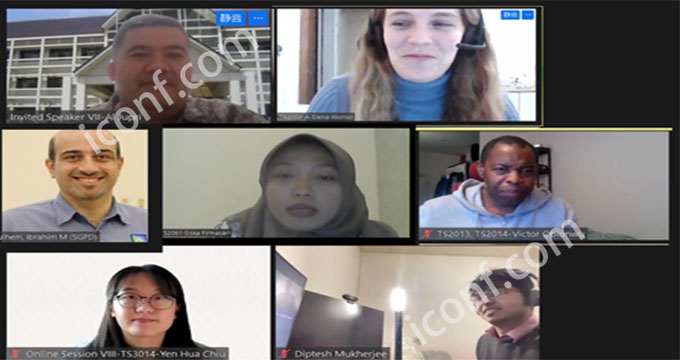

216 views||Release time: Dec 24, 2024
Submitting your paper to an EI (Engineering Index) conference is an important step in getting your research recognized in the global academic community. EI-indexed conferences are renowned for their high academic standards, attracting top researchers and professionals. Understanding the submission process is crucial to ensuring your paper is accepted.
In this article, we will take you through the step-by-step process of submitting your paper to an EI conference, highlighting the key requirements, deadlines, and tips to help you succeed.

The EI (Engineering Index) includes a curated list of prestigious conferences in engineering and related fields, ensuring that papers presented are of high quality and contribute significantly to the discipline. To submit a paper to an EI conference, you need to follow the conference’s specific submission process and meet its requirements.
Before you submit your paper, ensure that you are submitting to the correct EI-indexed conference relevant to your research area. You can find these conferences on platforms like iConf.com or other conference listing websites.
Each EI conference has its own set of submission guidelines. It is essential to read and understand these guidelines before starting your submission process. These typically include paper formatting requirements, word or page limits, and specific topics covered by the conference.
Once you've identified the correct EI conference, the next step is to prepare your paper for submission. Most EI conferences follow a formal submission procedure, and failure to adhere to these requirements can result in your paper being rejected.
Each conference will provide specific formatting requirements for paper submissions. Common guidelines include:
It’s essential to follow these formatting rules precisely to avoid issues during the review process.
The abstract is the first section that the reviewers will evaluate. Ensure your abstract is concise (usually between 150-250 words) and clearly summarizes the research problem, methodology, and results.
Before submitting your paper, ensure it is well-written, thoroughly researched, and free of errors. Consider seeking feedback from colleagues or mentors before finalizing your submission.
Most EI conferences use an online submission portal, where authors can upload their papers and provide necessary details. The process typically includes the following steps:
First, you will need to create an account on the conference’s submission platform. Most conferences use platforms such as EasyChair, CMT, or proprietary conference management systems.
Once registered, follow these steps to submit your paper:
Some EI conferences may require an initial submission fee or registration fee. Be sure to check the conference’s payment instructions and pay the required fees before the deadline. Keep a copy of the payment receipt for your records.
After submission, your paper will go through a review process conducted by experts in the field. The review process ensures that only high-quality papers are accepted for presentation at EI conferences.
Your paper will likely undergo a peer review process, where experts in your field will assess its quality, originality, and relevance to the conference’s theme. Reviewers will check:
In some cases, reviewers may suggest revisions. If your paper is accepted with minor or major revisions, make sure to address the feedback carefully and resubmit the updated version by the specified deadline.
Once the review process is complete, you will be notified whether your paper has been accepted for presentation. Accepted papers will be included in the conference proceedings.
Once your paper is accepted, the next step is preparing for the conference presentation.
Most EI conferences require authors to present their research in front of an audience. Prepare a clear, concise, and engaging presentation that highlights your research findings and answers potential questions from attendees.
In some cases, conferences will require you to submit a final version of your paper (often after the conference presentation) for inclusion in the conference proceedings. Be sure to meet any deadlines and follow the guidelines for submitting the final version.
After the conference, there are a few important actions to consider.
Submitting to an EI-indexed conference is a highly rewarding experience that can enhance your academic profile and provide valuable feedback on your research. By following the conference’s submission guidelines, preparing a strong paper, and engaging with the review process, you increase your chances of acceptance.
For more information on EI conferences, paper submission tips, and guidance on academic research, visit iconf.com, where you can find a curated list of upcoming EI conferences and detailed submission resources.